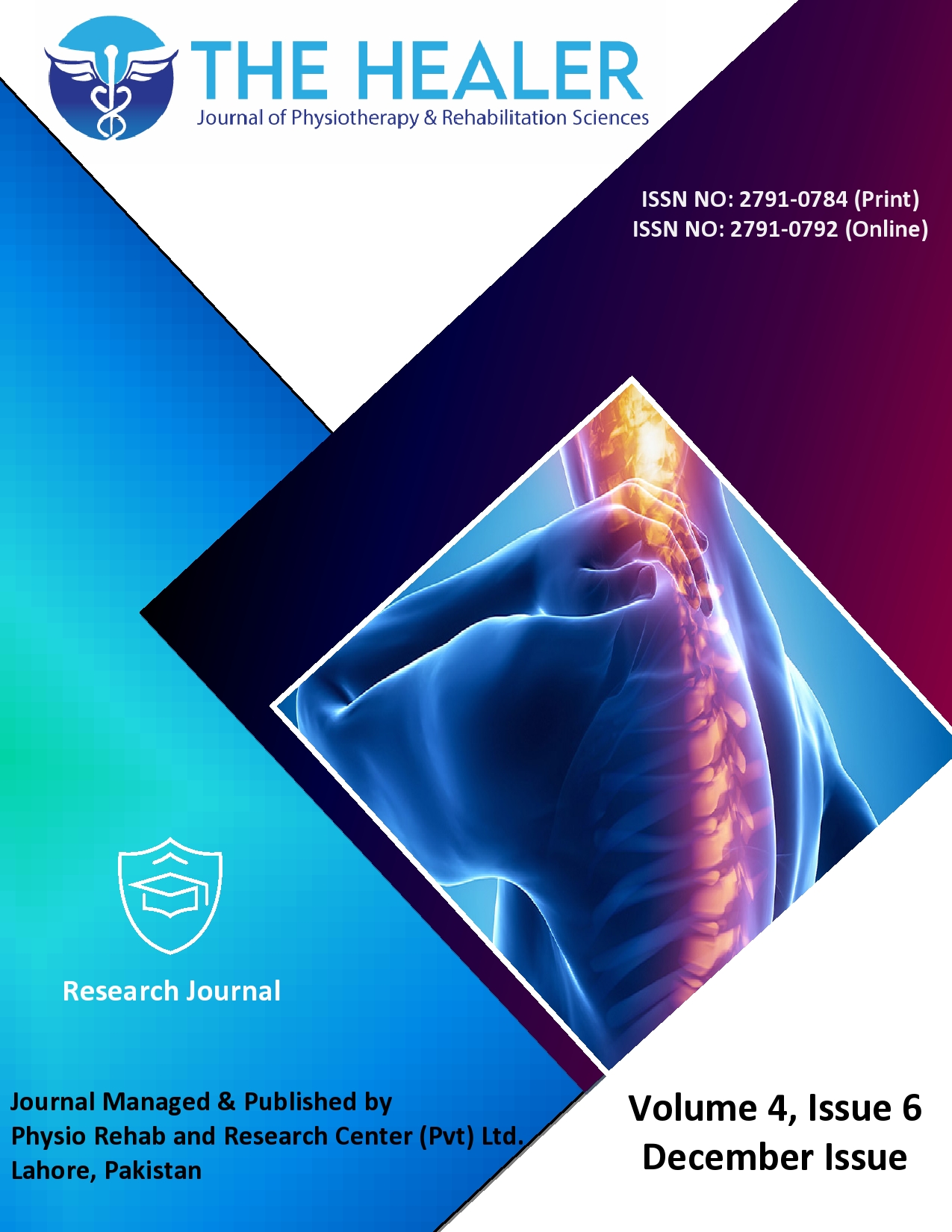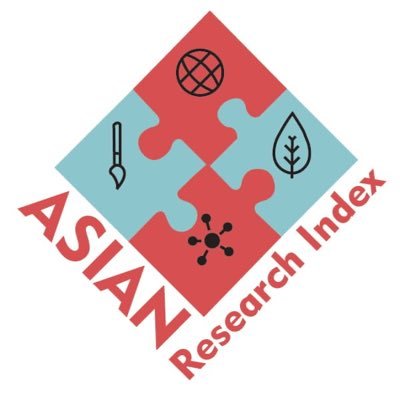Intensity and correlation of Heel Pain with Gastrocnemius Tightness in Patients with Plantar Fasciitis: A Cross-Sectional Study
DOI:
https://doi.org/10.55735/y2tcqy23Keywords:
Gastrocnemius tightness, Heel pain, Pain intensity, Plantar fasciitisAbstract
Background: Plantar fasciitis is known as one of the most common conditions that is known to causes pain in the heels. Gastrocnemius tightness might lead to an increase in the pressure of the forefoot and heel pain, which is symptomatic even without substantial limitation in the dorsiflexion. Objective: To assess the intensity of pain in the heel among patients with plantar fasciitis with tightening of the gastrocnemius and to determine the correlation between tightening of the gastrocnemius and severity of the pain in the heel. Methodology: This is a descriptive cross-sectional study, which was completed in six months. The data for this research were collected from Ghurki Trust Teaching Hospital and Services Hospital, Lahore, Pakistan, using convenience sampling. About 75 participants diagnosed with gastrocnemius tightness and plantar pain in the heel, for more than three months, were included in the study. Patients with a history of foot fractures, unusual or atypical symptoms that did not align with plantar fasciitis, or those who lacked the mental capability to participate in the study were excluded. Patients were then assessed by employing a visual analogue scale to measure the intensity of pain. Permission to conduct this current research was obtained from the Ethical Committee of Lahore College of Physical Therapy, Lahore, Pakistan. Written and explained consent was taken from every recruited participant in Urdu and English. Results: The minimum age of the involved participants was 24 years, and the maximum age was 78 years. The results show that the maximum patients recruited in this study (72%) reported suffering from moderate pain in the heel with gastrocnemius tightening. Conclusion: The majority of the patients with plantar fasciitis accompanied by gastrocnemius tightening experience moderate pain, when it was measured by the Visual Analogue Scale. This conclusion tends to highlight a substantial relationship between the intensity of pain in the heel in plantar fasciitis and gastrocnemius tightening.
Downloads
References
1. Pearce CJ, Seow D, Lau BP. Correlation between gastrocnemius tightness and heel pain severity in plantar fasciitis. Foot & Ankle International 2021; 42(1): 76–82.
https://doi.org/10.1177/1071100720955144
2. Monteagudo M, de Albornoz PM, Gutierrez B, et al. Plantar fasciopathy: a current concepts review. EFORT Open Reviews 2018; 3(8): 485.
https://doi.org/10.1302/2058-5241.3.170080
3. Wani SS, Pradhan DK, Verma P, Sateesh K. Iliotibial band trigger points and plantar heel pain: a cross-sectional study. Muscles, Ligaments & Tendons Journal (MLTJ) 2023; 13(2): 267–272.
https://doi.org/10.32098/mltj.02.2023.10
4. Anselmo DS, Thatcher L, Erfle D. Gastrocnemius recession as an alternative to midfoot arthrodesis for painful midfoot arthritis. The Journal of Foot and Ankle Surgery 2020; 59(5): 1106–8.
https://doi.org/10.1053/j.jfas.2019.08.036
5. Bandyopadhyay A, Kumar S, Mandal P. Isolated gastrocnemius contraction and gastroc recession surgery in case of plantar fasciitis: a systematic review and meta-analysis. Indian Journal of Orthopaedics 2023; 57(9): 1359–75.
https://doi.org/10.1007/s43465-023-00939-x
6. Boonchum H, Bovonsunthonchai S, Sinsurin K, Kunanusornchai W. Effect of a home-based stretching exercise on multi-segmental foot motion and clinical outcomes in patients with plantar fasciitis. Journal of Musculoskeletal & Neuronal Interactions 2020; 20(3): 411–420.
7. Busquets R, Sanchez-Raya J, Sallent A, et al. Proximal medial gastrocnemius release: muscle strength evaluation. Foot and Ankle Surgery 2020; 26(7): 828–32.
https://doi.org/10.1016/j.fas.2019.10.013
8. Cobacho MT, Barcia JM, Freijó-Gutiérrez V, et al. A predictive model for gastrocnemius tightness in forefoot pain and intractable plantar keratosis of the second rocker. Journal of the American Podiatric Medical Association 2021; 111(3): Article_12.
https://doi.org/10.7547/18-024
9. DeHeer PA, Standish SN, Kirchner KJ, Fleischer AE. Prevalence and distribution of ankle joint equinus in 249 consecutive patients attending a foot and ankle specialty clinic. Journal of the American Podiatric Medical Association 2021; 111(2): Article_1.
10. Martinez L, Lalevée M, Beldame J, et al. Reliability of a new computerized equinometer based on Silfverskiöld test to measure gastrocnemius tightness. PloS One 2023; 18(4): e0284279.
https://doi.org/10.1371/journal.pone.0284279
11. De Garceau D, Dean D, Requejo SM, Thordarson DB. The association between the diagnosis of plantar fasciitis and Windlass test results. Foot & Ankle International 2003; 24(3): 251–5.
https://doi.org/10.1177/107110070302400309
12. Hoefnagels EM, Weerheijm L, Witteveen AG, et al. The effect of lengthening the gastrocnemius muscle in chronic therapy-resistant plantar fasciitis. Foot and Ankle Surgery 2021; 27(5): 543–9.
https://doi.org/10.1016/j.fas.2020.07.003
13. Tariq Z, Zahoor H, Ayub R, et al. Association of isolated gastrocnemius tightness in patients with heel pain. Journal of Health and Rehabilitation Research 2024; 4(1): 734–8.
https://doi.org/10.61919/jhrr.v4i1.484
14. Koh DTS, Yeo W, Koo KOT, et al. Radiofrequency plantar fascia coblation with and without gastrocnemius recession in the management of recalcitrant plantar fasciitis. Foot & Ankle International 2022; 43(9): 1167–73.
https://doi.org/10.1177/10711007221091807
15. Laborde JM. Tendon Balancing for diabetic foot ulcers, foot pain, and charcot foot. Diabetic Foot-Recent Advances: IntechOpen; 2022.
https://doi.org/10.5772/intechopen.105938
16. Stratton SJ. Population sampling: probability and non-probability techniques. Prehospital and Disaster Medicine 2023; 38(2): 147–8.
https://doi.org/10.1017/S1049023X23000304
17. Althubaiti A. Sample size determination: a practical guide for health researchers. Journal of General and Family Medicine 2023; 24(2): 72–8.
https://doi.org/10.1002/jgf2.600
18. Aslam A, Akbar H, Ullah S, et al. Prevalence of Plantar Fasciitis in Salesgirls of Lahore, Pakistan: A Cross-Sectional Survey. Journal of Health, Wellness and Community Research 2025; 3(15): e918–e.
https://doi.org/10.61919/0dzyfg40
19. Palee P, Sakulsriprasert P, Thammajaree C, et al. Association among pain, skin blood flow and temperature, plantar fascia and flexor digitorum brevis thickness, and foot function index in individuals with plantar fasciitis: a cross-sectional study. Journal of Musculoskeletal Research 2024; 27(1): 2350010.
https://doi.org/10.1142/S0218957723500100
20. Åström M, Thet Lwin ZM, Teni FS, et al. Use of the visual analogue scale for health state valuation: a scoping review. Quality of Life Research 2023; 32(10): 2719–29.
https://doi.org/10.1007/s11136-023-03411-3
21. Nakale NT, Strydom A, Saragas NP, Ferrao PN. Association between plantar fasciitis and isolated gastrocnemius tightness. Foot & Ankle International 2018; 39(3): 271–7.

Downloads
Published
License
Copyright (c) 2024 The Healer Journal of Physiotherapy and Rehabilitation Sciences

This work is licensed under a Creative Commons Attribution 4.0 International License.














